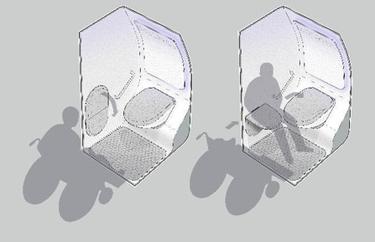The World Health Organisation (WHO) estimates that 15% of the global population – around one billion people - is disabled. With this figure set to rise by 2050 as the traveling population ages, Airbus’ long held commitment to accessibility and inclusion for passengers of all abilities has never been more important.
A recent IATA survey showed that airlines are seeing a steady increase in passenger demand for wheelchair assistance, and up to 70% of disabilities are not always visible, such as difficulty in hearing and poor eyesight
The ageing passengers and persons with reduced mobility (PRMs) are probably the most impacted by the COVID-19 pandemic as a high risk group. With the current situation, the travel experience has been significantly impacted by increasing travel barriers and the challenges of a more digitised travel environment.
Innovating to stay ahead of the curve
Where physical distancing is needed, these practices may not be possible for disabled passengers who require additional assistance such as seat transfers, use of wheelchairs, or help with carry-on baggage. Some passengers may have a health condition which prevents them from wearing a mask. For airport operations it is challenging for airlines to mandate face mask-wearing without offending passengers who are legitimately qualified for an exemption.
“Airbus’ cabin and cargo team dealing with accessibility are working to stay ahead of the curve, developing solutions to facilitate cabin comfort with a better traveling experience for all cabin users”, explains Hans Giesa, Cabin and Cargo Senior Expert, Human Factors.
“Our job is to ensure that aircraft products and services meet everyone’s requirements, taking into account a wide scope of special needs along with operational efficiency,” he says. “The challenge is to balance all these different areas”.

Specialists who are experts in this field
There are multidisciplinary experts, including psychologists, ergonomics and aeromedical experts, engineers who specialise in usability, and experts with cabin crew experience. “In the early design phases, we use Virtual Reality tools - a mock-up will only be built if we can prove passenger usability” Hans says. “To analyse the ergonomics and operational aspects, we use digital mannequins representing our reference population. We can use small mannequins to test the reachability of a handle and the taller ones for clearances and postures where the space is limited,” adds Hans. “As soon as a mock-up is ready the team tests it with real users. There are a lot of accessibility regulations and part of our role is to ensure we comply. And we want to go even further, ” he adds.

Airbus’ cabin and cargo team dealing with accessibility are working to stay ahead of the curve, developing solutions to facilitate cabin comfort with a better traveling experience for all cabin users.
Hans Giesa, Cabin and Cargo Senior Expert, Human Factors.
For instance, Airbus is looking into innovation-based approaches to traveling with wheelchairs. The impact of damaged wheelchairs on passengers during the travel experience is clearly an issue. “I have seen it happen,” says design office engineer Dirk Thalheim, himself a wheelchair user and Airbus employee, who regularly advises the team on accessibility, acting as a tester for new solutions. “Your wheelchair is your legs so it is a horrible scenario to be stuck in an airport chair.” Mobility devices to be transported are growing in size, weight and complexity.
Airbus’ latest reduced mobility lavatory for the A320 Family cabin, offers optional transfer seats which enables a passenger to move from an onboard-wheelchair to an intermediate seat and then onto the lavatory. “People who don’t need assistance from a support person can use it and the wheelchair itself stays outside,” Hans explains.

Inclusive Travel
Going forward, the aviation industry is taking into consideration that the traveling public includes people who have a wide spectrum of disabilities and challenges that are not so obvious, such as hearing or visual impairments, hidden or intellectual disabilities, all of which need to be supported when they fly.
“With cabin design, we are mainly looking at the use of space but digitisation brings new opportunities to improve travel for everyone,” says Hans. “We can act as an integrator and push new ideas via organisations like Airbus Scale. Recent projects include a start-up looking at facilitating wheelchair use at airports and a navigation app for visually impaired travelers, which gives them information during the flight.”
Accessibility and inclusion remains a key priority for all our passengers who travel on an Airbus aircraft.




